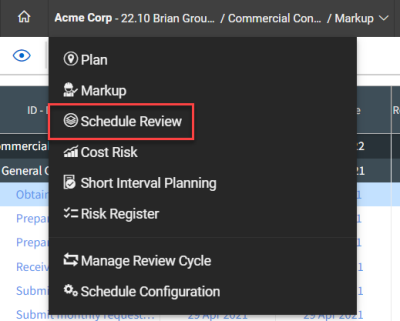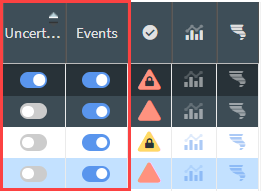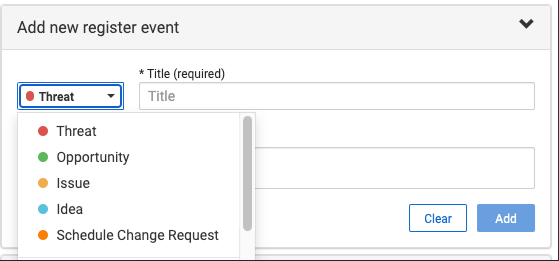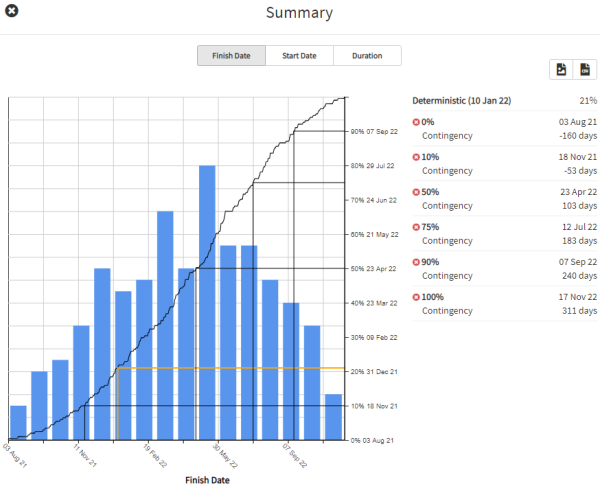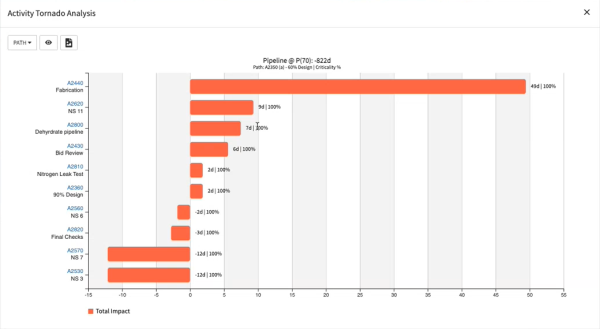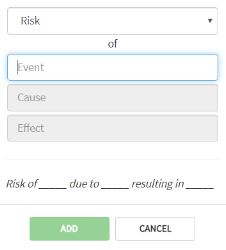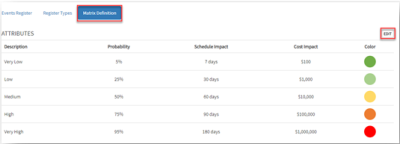Review And Risk Process Overview
The Review process is where you can review feedback from markup, and apply a variety of intelligence rankings in order to run a risk assessment on your project.
Uncertainty is an internal factor, such as quantity growth or productivity loss or gain. It evaluates duration or cost realism and plan confidence.
A Risk Event is an external factor where events are discrete and measurable, such as third-party delays or unexpected labor shortages. It evaluates the probability of the event occurring, the schedule impact should the event occur, and any impact in associated costs.
Projects often tend to mix uncertainty and risks events together resulting in less accurate mapping of risk characteristics to projects. It is important to evaluate risk items and place each in their appropriate categories, Uncertainty or Risk Event.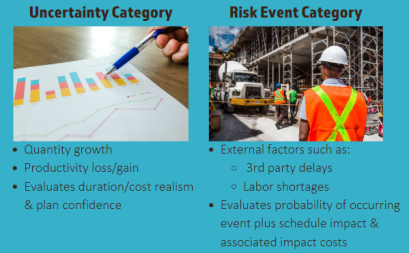
This feedback can come from the Markup process outlined in other topics. From here, the following review process steps can help you conduct a risk assessment utilizing a confidence level, called a P-value.
The below steps explain how to generate a Risk Adjust project:
-
From the Project View drop-down, select Review.
-
Select a P-value for instant insight during the review process by first selecting the P-value icon .
- A P-value of 100 represents a worst case scenario, while a value zero represents a best case scenario
- You are assigning a confidence level against a target goal
-
Switch the Uncert and Events On/Off to be applied to the corresponding work package or terminal level.
- This feature includes or excludes that detail in the risk model. It is recommended to begin analysis with both options switched to the On position.
- Move down the project and review contributor’s Uncertainty rankings for each line item.
- When reviewing Uncertainty, there are three main options for generating adjustments to the project: Artificial Intelligence (AI), Human Intelligence (HI), and Risk Intelligence (RI)

- As needed, assign Register Events to project items.
After all uncertainty and events have been agreed to, you can access two main reports that provide insight into the project’s risk:
- Risk histogram

- Tornado analysis

You can identify how often activities fall upon the critical path during Monte Carlo simulation runs. The image below shows the Criticality % view active.
Using Float Consumption, you can visualize hidden risk assignments due to float consumption and compare activity risk tolerance versus net impacts. The image below shows the Float Consumed and the Criticality % views active.
- Risk histogram
-
Adopt any part of the risk model by selecting Adopt Markup or Apply Uncertainty adjustments to deterministic schedule. Both options will run a Critical Path Method schedule calculation and generate a new risk adjusted project schedule.
Import/Export
You can Import and Export risks in the project register. There are options for Oracle PRA – Pertmaster and Deltek Acumen. These are simple Excel formats that can also be generated outside of any tool and used for importing into Schedule.
Add Register Event
You can manually add a register event to the project register. Select Add Register Event and then define the event type and description.
Filter
Select the filter icon to enable filtering for the register view.
Matrix Definition
The default matrix in the Knowledge Library is adopted when the project is created. The matrix can be tailored by project to create a probability and severity range that is appropriate for the project.
